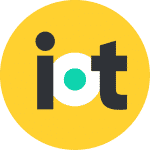
At the 2019 World Economic Forum, the Fourth Industrial Revolution will be one of the topics for discussion. We have much to thank the Fourth Industrial Revolution for gradually shaping a world that’s more transparent, efficient, and independent. In a fast-digitalizing landscape, we are experiencing the need for technology to be the bedrock of sustainable development. The Internet of Things (IoT) is a fundamental component of that bedrock.
Business models and digital strategies heavily rely on the tools of the day to create an ecosystem that is sustainably progressive. The impact of IoT cannot be emphasized enough in this disruptive paradigm. As we further the IoT journey, the world will see new cross-industry partnerships and innovative business models. This will result in the cost of deployment and subsequently generated value being shared by all stakeholders across spectrums.
Opportunities Galore
As the number of connected devices sees an unprecedented increase, the vast amount of data will create unique opportunities for improving services and livability. What are the opportunities that leaders and businesses can capitalize on to create a sustainable future using data and connectivity? The question is complex, but the answer isn’t. In a hyper-connected world that’s constantly focused on hyper-consumerism, the value generation will depend on IoT in a big way.
IoT’s impact is multilateral and overarching. Some of the key areas that stand to be benefited are the following:
1. Optimization of work environments and improved worker safety: Shop floors and similar work environments are seething with safety hazards. IoT can help in monitoring and controlling the conditions, like temperature, air quality, humidity, and lighting. Additionally, wearables for safety of the workers can be leveraged to keep track of the individuals’ conditions and send timely alerts to centralized systems in case of emergencies. Interventions such as these will not only provide a safer work environments but will also improve the overall performance of the workforce. With safety comes greater efficiency.
2. Better, more affordable healthcare: The aging population is growing rapidly, specifically in developed countries, thereby straining healthcare systems. IoT has the potential to deliver value in such a scenario by enabling doctors to monitor and treat patients remotely and to preempt the onset of illnesses with timely data and insights on patient health.
3. Improved movement of people and goods: Fleet management systems that leverage IoT technologies to monitor vehicle movement in real time can be used for route optimization. This leads to reduction in fuel consumption and improved transit times across the supply chain. Such solutions can be deployed effectively in the transport of both goods and people.
4. Natural disaster monitoring and prevention: We’re now seeing some traction in IoT applications that can warn us of impending natural disasters or even prevent the death and destruction caused by these distressing events. These applications can also be extended to facilitate efficient rescue and recovery efforts. For instance, effective prediction involves identifying hazard areas and potential triage zones on maps, facilitating communication through platforms that don’t depend on cellular networks or landlines. Sensors with high sensitivity and meters with greater data capabilities are being used to provide early warning systems for earthquakes and volcanic eruptions.
One World, One Ecosystem
The key tenet of Globalization 4.0 is to bring the world together, thereby adding value to lives and businesses. The myriad of innovations is being leveraged in a varied scale in that quest. For a truly globalized world, data analysis and connectivity have to be on point. It’s, therefore, obvious that IoT will only grow in stature, and its utility will stretch over time.
While IoT applications offer promise in varied areas, we’re still grappling with challenges related to security, interoperability, and sustainability. Hence, it goes without saying that platforms such as WEF are seminal to bringing relevant stakeholders on the same page and facilitating significant deliberations in pursuit of resolutions for some of these challenges.
Written by Sukamal Banerjee, Head of IoT at HCL.





 New Episode
New Episode





 Latest IoT News
Latest IoT News







